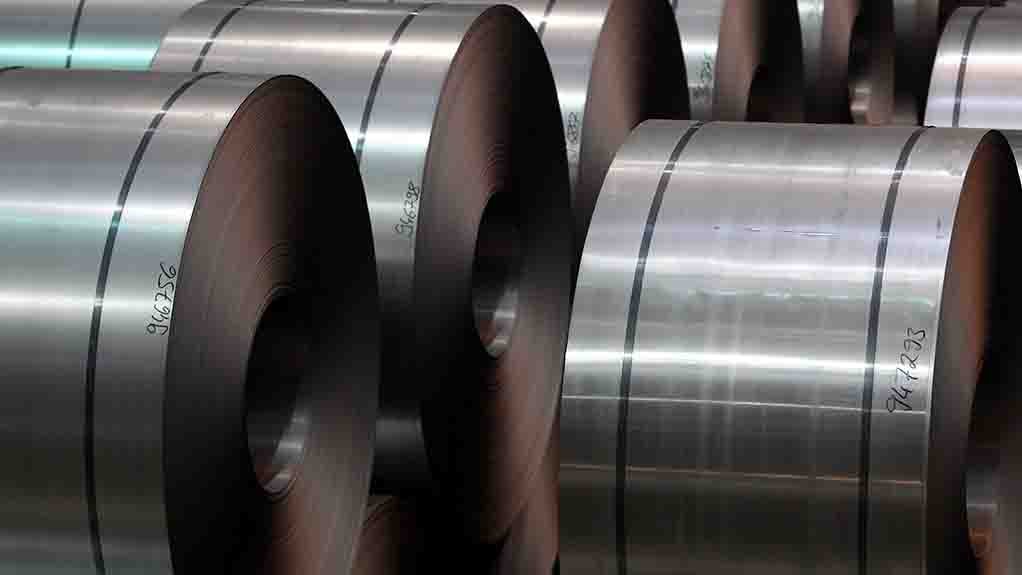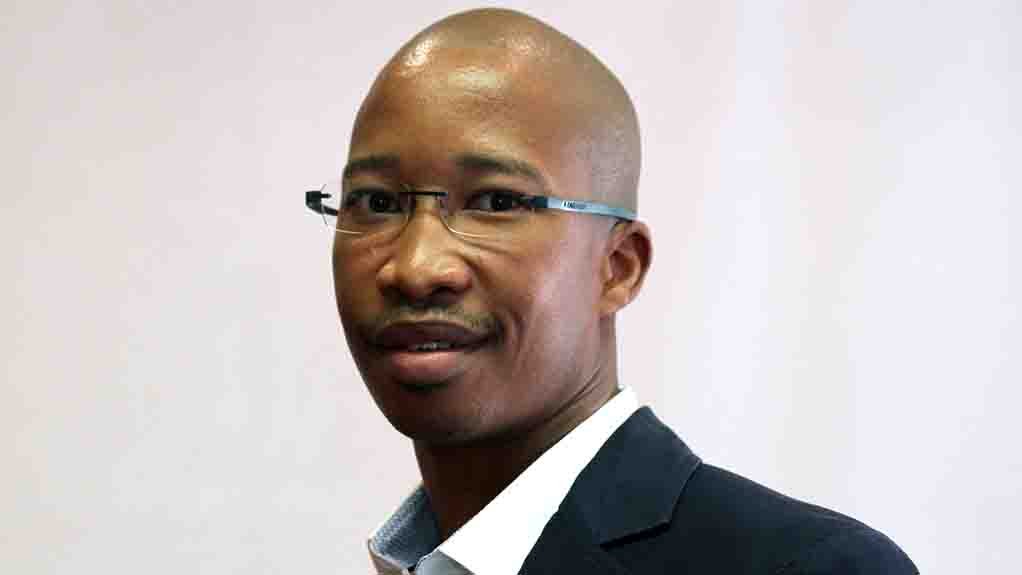Non-competitiveness, non-use plague South African steel industry



COVID CAUSE AND EFFECT The post Covid-19 lockdown phase saw an acute shortage of hot rolled coil, which compromised the demand of the steel tube and pipe mills over successive quarters
KEITUMETSE MOUMAKOE The localisation and designation policies implemented in the steel sector have had significant positive impacts on growth, sustainability and economic transformation
The current state of the South African steel industry is one where a lack of competitiveness and the non-use of its installed production capacity continue at a concerning rate, relative to other steel-producing developing countries.
This has, in part, spurred the Competition Commission to institute an inquiry to prove a restriction of competition, among other salient issues, in the sector, industry body Steel Tube Export Association of South Africa (Steasa) CEO Keitumetse Moumakoe tells Engineering News.
“This enquiry will, for the most part, be confined to the upstream steel industry from where the carbon steel tube and pipe sector’s competitiveness issues, in particular, stem,” he says.
Moumakoe believes that, while at this stage it might seem “overly” optimistic, ideally the South African steel sector outlook should be one in which the steel industry’s long-term sustainability sees it considered as a key employer, growth contributor and skills developer, facilitated by increased levels of domestic consumption and export demand, as well as implementation of the six key pillars of the Steel Master Plan.
However, legacy challenges, including poor economic growth, high input costs, inconsistent electricity supply, high rail and port service costs, diminished production owing to the availability of cheaper imports, challenging trading conditions, high tariffs and a dearth of infrastructural development continue to hinder the industry’s growth.
The post Covid-19 lockdown phase saw an acute shortage of hot rolled coil (HRC), which compromised demand from the steel tube and pipe mills over successive quarters throughout 2021 and 2022, which Moumakoe explains “eventually led to the Department of Trade, Industry and Competition issuing a policy directive to the International Trade Administration Commission of South Africa (Itac) to investigate the creation of a rebate facility of customs and safeguard duties to cover imported flat steel products for the downstream steel industry”.
The directive cited complaints from the downstream sector regarding the shortages in HRC from ArcelorMittal South Africa (AMSA).
“Industry was vindicated when Itac approved the creation of a temporary rebate provision citing fundamentally that primary steel shortages and supply challenges of flat steel products were placing the value chain at risk,” Moumakoe relays.
“The cost of South African steel, particularly domestic HRC, has long been a contentious issue for the downstream industry. It is computed using AMSA’s steel basket pricing, which has been criticised for its lack of transparency. Despite government oversight, our members have not seen any significant relief from this pricing structure, which is intended to improve their competitiveness and export capabilities,” he says.
Green Steel
The topic of green steelmaking is being discussed more frequently in many international steel circles as the industry embarks on decarbonising in various ways, one being steel production through the Hydrogen Direct Reduced Iron (H-DRI) process – using green hydrogen instead of natural gas or coal. This, Moumakoe says, is a method of steel production that will be “very key alongside the recycling effort” from an environmental perspective.
According to energy expert Hilton Trollip, “H-DRI is going to be a major international commodity and [South Africa] is one of three places in the world where this commodity can be made at least cost”.
Moumakoe says that the South African steel industry could, therefore, play a pivotal role if it “positions itself strategically to assist Europe in its H-DRI commitments, which requires a lot of green energy” – something that South Africa does not lack.
This would essentially culminate in the export of South African value-added green steel tubes and pipes, as well as other flat and long steel products, to the European Union, he envisions.
Government Incentives and Policies
The localisation and designation policies implemented in the steel sector have had significant positive impacts on growth, sustainability and economic transformation. These policies aim to rebuild the economy, reindustrialise the steel industry, create jobs, and promote ownership transformation.
A significant moment was the designation of large bore spiral submerged arc welded steel conveyance pipes, which Moumakoe says “are commonly used in South Africa’s bulk water infrastructure projects”.
This designation ensures that all water infrastructure projects specifying steel pipes that meet the size requirements outlined in the Treasury Note must be sourced from local mills such as LB Pipes and Hall Longmore.
The Council for Scientific and Industrial Research (CSIR) has played a role in supporting the local steel industry by developing a polymer composite solution for steel pipe manufacturer Hall Longmore.
“This development brings it closer to offering a locally produced push-fit application for pressurised steel pipelines. The CSIR’s Nanomaterials Industrial Development Facility was used to formulate the unique polymer composite material and conduct coating trials,” Moumakoe explains.
Hall Longmore faced challenges in importing a special polymer for pipe coating, owing to fluctuations in the rand/dollar exchange rate, making budgeting for projects increasingly difficult. In response, they collaborated with the CSIR to develop a composite material using locally produced polymers, he explains.
However, given the poor domestic demand for steel, opportunities for growth in tube and pipe production lie in maximising exports, Moumakoe states, noting that this is crucial when one considers that South Africa’s industrial production declined by 1.4% year-on-year in March 2023, following a 5.5% year-on-year drop in the previous month.
Comments
Press Office
Announcements
What's On
Subscribe to improve your user experience...
Option 1 (equivalent of R125 a month):
Receive a weekly copy of Creamer Media's Engineering News & Mining Weekly magazine
(print copy for those in South Africa and e-magazine for those outside of South Africa)
Receive daily email newsletters
Access to full search results
Access archive of magazine back copies
Access to Projects in Progress
Access to ONE Research Report of your choice in PDF format
Option 2 (equivalent of R375 a month):
All benefits from Option 1
PLUS
Access to Creamer Media's Research Channel Africa for ALL Research Reports, in PDF format, on various industrial and mining sectors
including Electricity; Water; Energy Transition; Hydrogen; Roads, Rail and Ports; Coal; Gold; Platinum; Battery Metals; etc.
Already a subscriber?
Forgotten your password?
Receive weekly copy of Creamer Media's Engineering News & Mining Weekly magazine (print copy for those in South Africa and e-magazine for those outside of South Africa)
➕
Recieve daily email newsletters
➕
Access to full search results
➕
Access archive of magazine back copies
➕
Access to Projects in Progress
➕
Access to ONE Research Report of your choice in PDF format
RESEARCH CHANNEL AFRICA
R4500 (equivalent of R375 a month)
SUBSCRIBEAll benefits from Option 1
➕
Access to Creamer Media's Research Channel Africa for ALL Research Reports on various industrial and mining sectors, in PDF format, including on:
Electricity
➕
Water
➕
Energy Transition
➕
Hydrogen
➕
Roads, Rail and Ports
➕
Coal
➕
Gold
➕
Platinum
➕
Battery Metals
➕
etc.
Receive all benefits from Option 1 or Option 2 delivered to numerous people at your company
➕
Multiple User names and Passwords for simultaneous log-ins
➕
Intranet integration access to all in your organisation


















